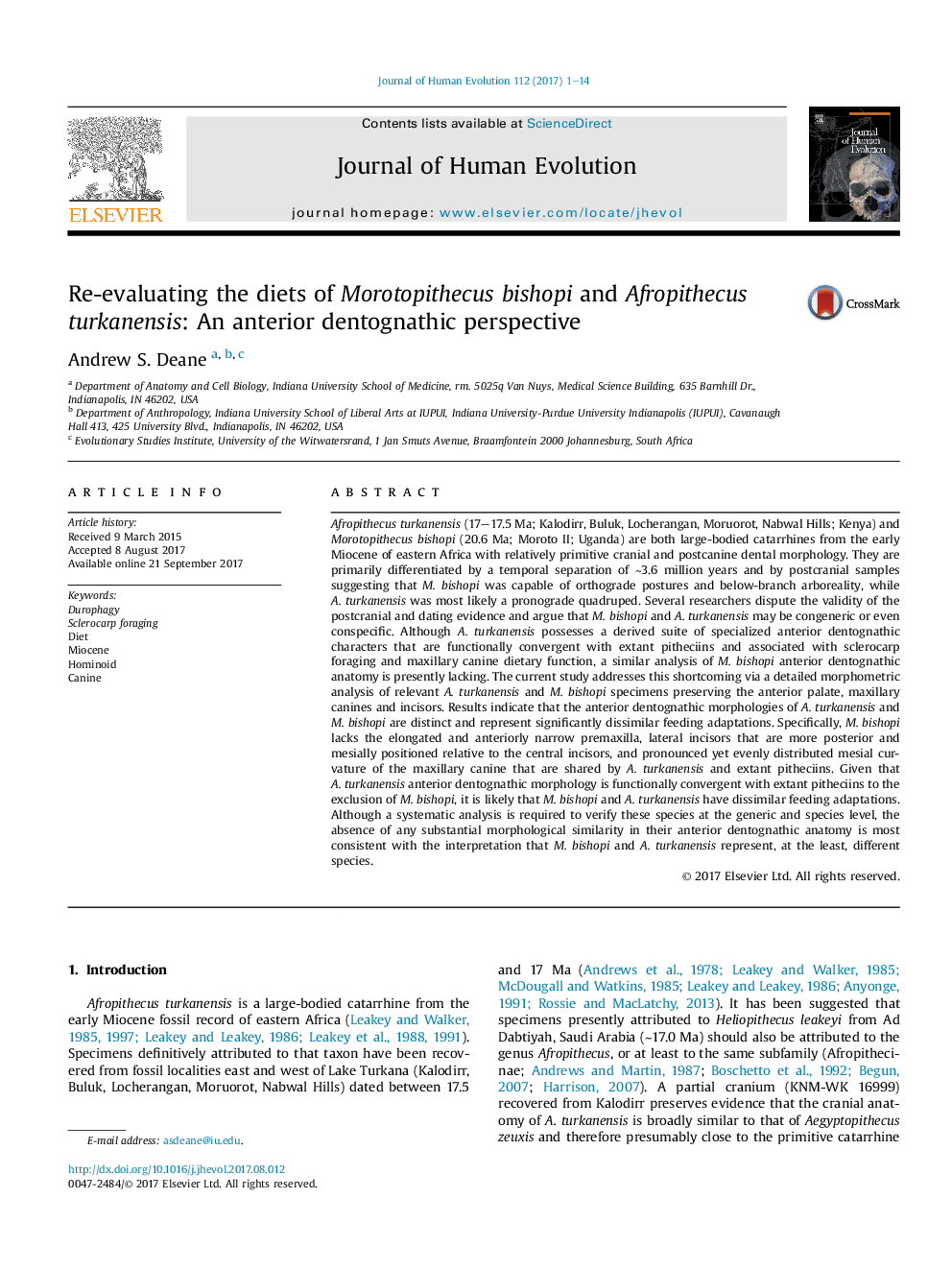| کد مقاله | کد نشریه | سال انتشار | مقاله انگلیسی | نسخه تمام متن |
|---|---|---|---|---|
| 5766749 | 1628137 | 2017 | 14 صفحه PDF | دانلود رایگان |

Afropithecus turkanensis (17-17.5 Ma; Kalodirr, Buluk, Locherangan, Moruorot, Nabwal Hills; Kenya) and Morotopithecus bishopi (20.6 Ma; Moroto II; Uganda) are both large-bodied catarrhines from the early Miocene of eastern Africa with relatively primitive cranial and postcanine dental morphology. They are primarily differentiated by a temporal separation of â¼3.6 million years and by postcranial samples suggesting that M. bishopi was capable of orthograde postures and below-branch arboreality, while A. turkanensis was most likely a pronograde quadruped. Several researchers dispute the validity of the postcranial and dating evidence and argue that M. bishopi and A. turkanensis may be congeneric or even conspecific. Although A. turkanensis possesses a derived suite of specialized anterior dentognathic characters that are functionally convergent with extant pitheciins and associated with sclerocarp foraging and maxillary canine dietary function, a similar analysis of M. bishopi anterior dentognathic anatomy is presently lacking. The current study addresses this shortcoming via a detailed morphometric analysis of relevant A. turkanensis and M. bishopi specimens preserving the anterior palate, maxillary canines and incisors. Results indicate that the anterior dentognathic morphologies of A. turkanensis and M. bishopi are distinct and represent significantly dissimilar feeding adaptations. Specifically, M. bishopi lacks the elongated and anteriorly narrow premaxilla, lateral incisors that are more posterior and mesially positioned relative to the central incisors, and pronounced yet evenly distributed mesial curvature of the maxillary canine that are shared by A. turkanensis and extant pitheciins. Given that A. turkanensis anterior dentognathic morphology is functionally convergent with extant pitheciins to the exclusion of M. bishopi, it is likely that M. bishopi and A. turkanensis have dissimilar feeding adaptations. Although a systematic analysis is required to verify these species at the generic and species level, the absence of any substantial morphological similarity in their anterior dentognathic anatomy is most consistent with the interpretation that M. bishopi and A. turkanensis represent, at the least, different species.
Journal: Journal of Human Evolution - Volume 112, November 2017, Pages 1-14